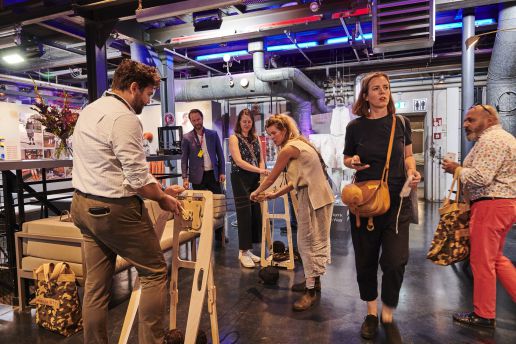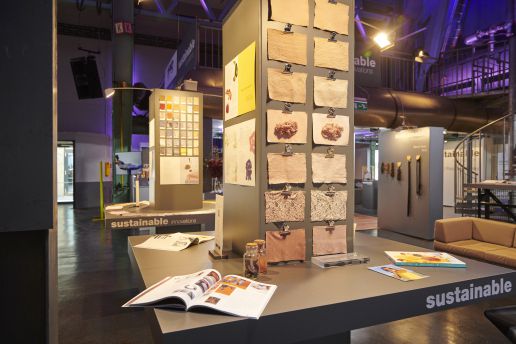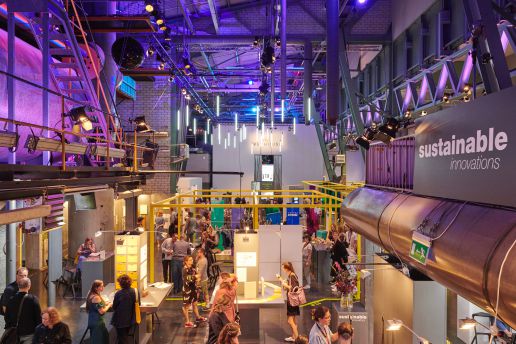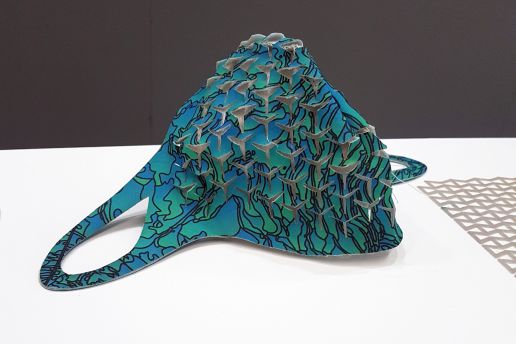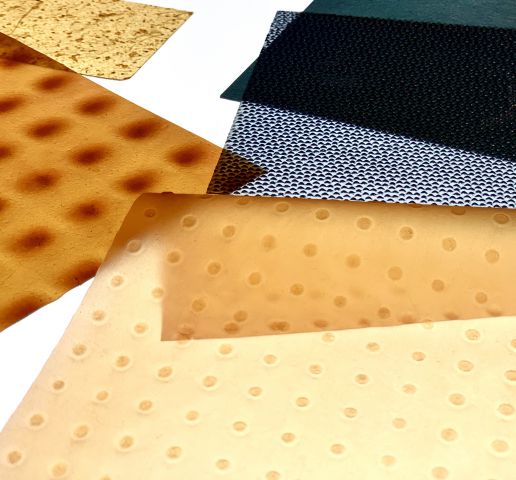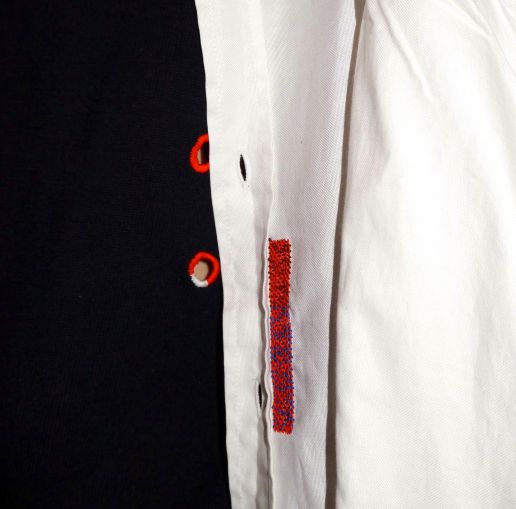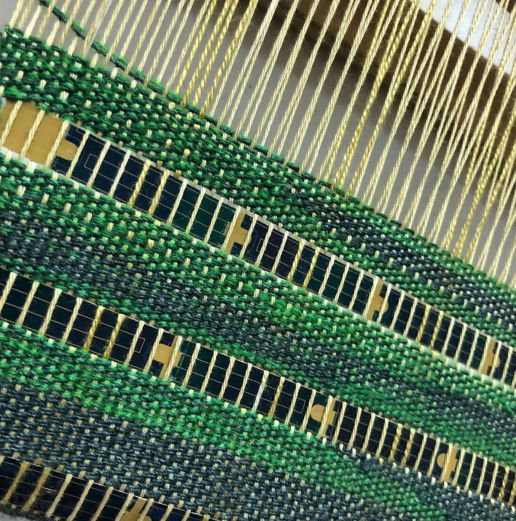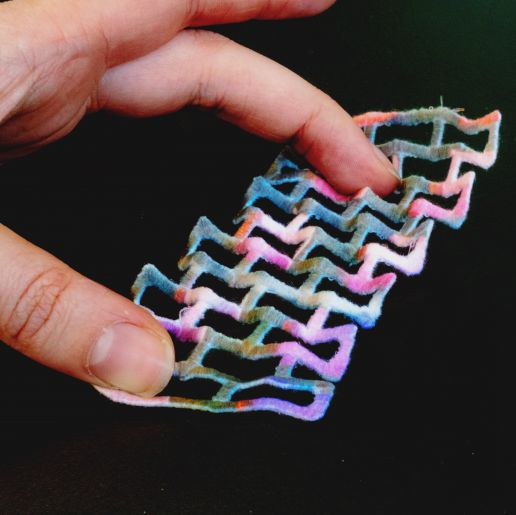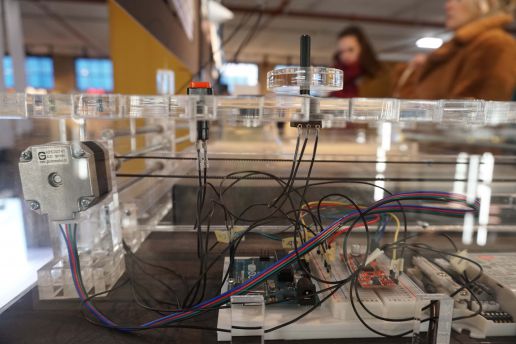Sustainable Innovations
Living Material by Iris Bekkers
SUSTAINABLE INNOVATION Autumn.Winter 21/22 #1
SUSTAINABLE INNOVATIONS curator Simon Angel presented four developments for the season Autumn.Winter 21/22 at FABRIC DAYS at the beginning of September. The Dutchman is always on the search for interesting young designers, outstanding innovations and the latest novelties in the textile world.
In our latest interview with him, he stated: “With the Sustainable Innovation forum, we present the near future and showcase what already is possible.”
Let us now present you the first of this season’s SUSTAINABLE DEVELOPMENTS:
LIVING MATERIAL BY IRIS BEKKERS

Doesn’t fit anymore, doesn’t fit properly: Many of our favourite pieces of clothing lose their shape after a short time and are shipped directly to the nearest garbage dump. Textiles that adapt to individual body shapes and external conditions could reform the fashion and textile industry.
To create such textiles, product designer Iris Bekkers uses auxetic materials in her project “Moving Structures”, i.e. stretchable materials that can adapt their structure to their surroundings. As part of her final project at Eindhoven University of Technology, she has developed a special face mask that not only adapts to different face shapes, but also adapts its filter function to the environment and is very breathable.
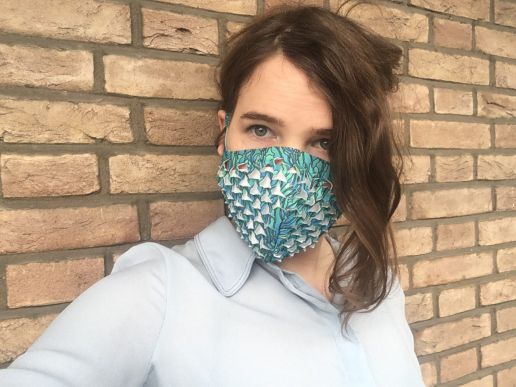
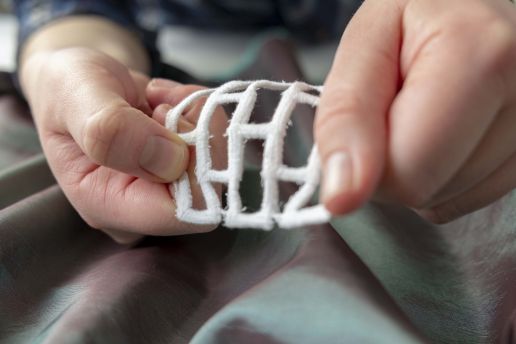
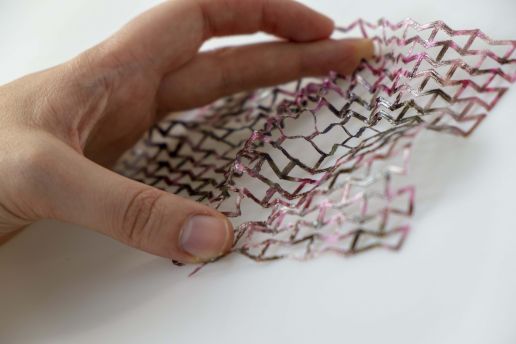
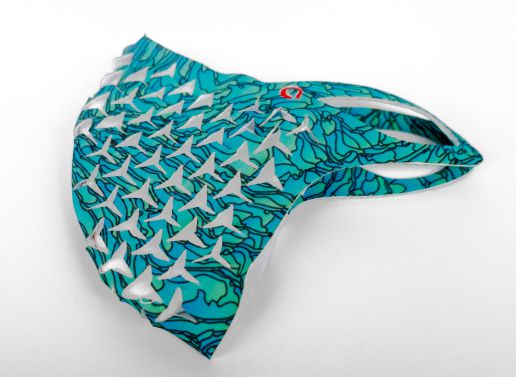
More comfort, longer wearing time, less waste: Due to their geometric structures, auxetic materials become thicker when stretched, rather than thinner like most fabrics. The potential of such fabrics ranges from jackets that adapt to the seasons and can therefore be worn in summer and winter, to shoes that change their flexibility and stability as required. Bringing the material to life: For her designs, Iris Bekkers not only thinks about the material and its texture, but also about the context in which the fabrics are used and enjoyed. Only in this way can her designs combine man and nature.
“The auxetic samples are the start and inspiration for a range of products that can adapt and transform themselves, functioning optimally in different circumstances. The potential for adaptability results in more value, more function and a reduction in the quantity of materials and products necessary.”
Iris Bekkers
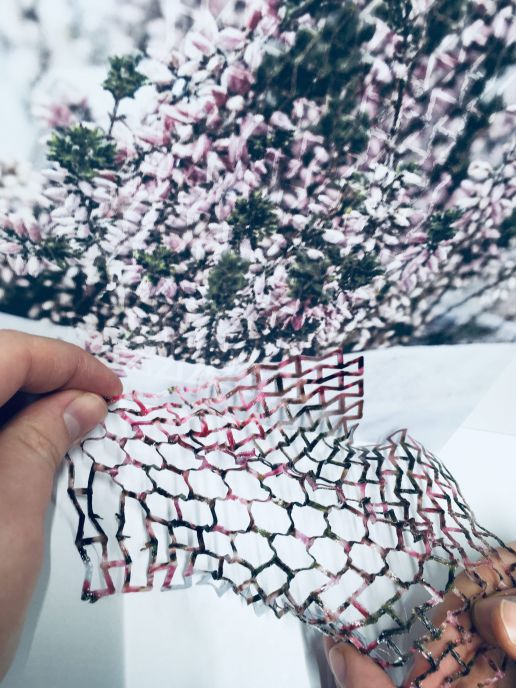
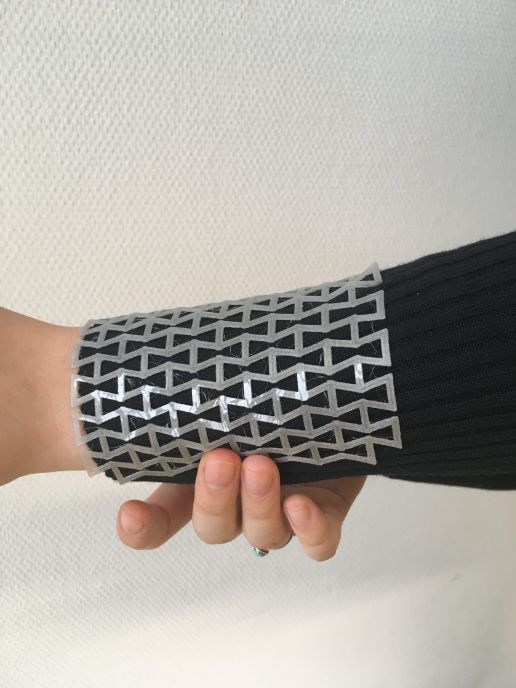
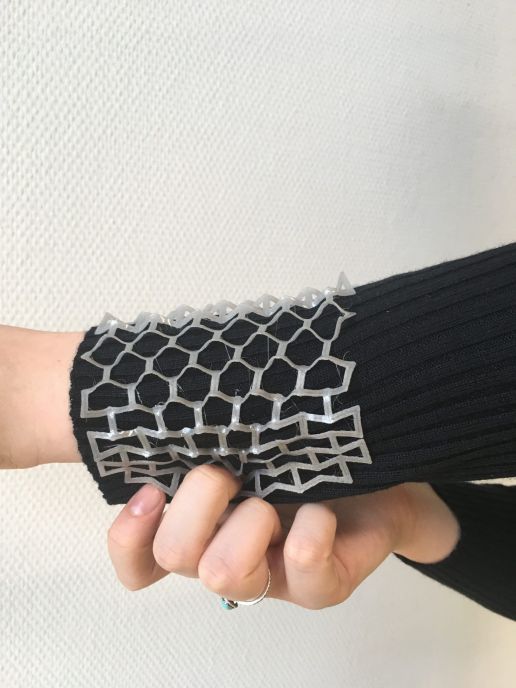
SUSTAINABLE INNOVATIONS, Big Changes & New Challenges
An interview with SUSTAINABLE INNOVATIONS curator Simon Angel – the Dutchman who is always on the search for interesting young designers, outstanding innovations and the latest novelties in the textile world. You will find Simon and the four SUSTAINABLE INNOVATIONS he chose this season in the foyer of hall 4 at FABRIC DAYS.
- Simon, what new innovations can we expect this season?
Rethinking old traditions and adding a contemporary note to them can create innovation – sometimes you don’t have to come up with something entirely new to be innovative. This edition ‘the new thing’ is referring to something old like weaving, repairing and recycling. For example, weaving with solar-panels from Pauline van Dongen, repairing as value-creation from Studio Mend or value adding applications by Auxetics and industry ready, recycled bioplastic fabrics by Studio YouYang. All these projects use traditional crafts and materials, but in a new and innovative way.
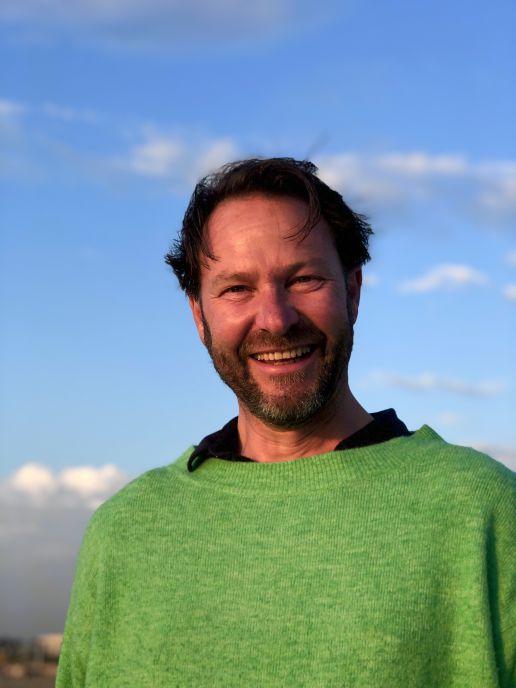
2. In 2020, the Corona pandemic brought the world to an unscheduled stop. But the crisis has also sped up the movement towards a more sustainable lifestyle. How will this shape innovation?
As you know, I’m an optimist. This year’s developments actually encouraged change. How you look at things makes a big difference in order to get yourself in the right inspired mode. Pandemics or heatwaves are nature’s way of confronting us. Just like we are experiencing changes in our environment, the nature experienced changed by humans for years and is now responding to us. All this is leading us to a dialogue with nature – a much needed one. Bit by bit we realise we exist as part of nature. Designers, scientists, the industry and consumers change their habits and question old methods. Finally, most of us start to realise what is necessary to ultimately save our world. We can only achieve that, when we are searching to find the balance with ourselves and with nature.
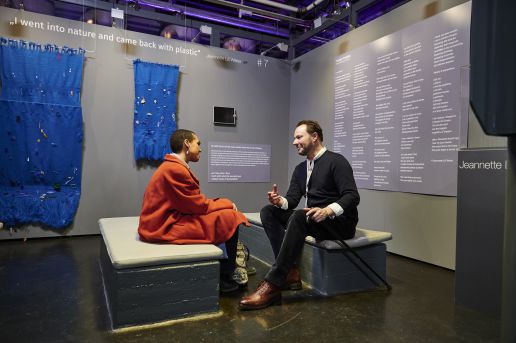
- It is the sixth time that you are curating the SUSTAINABLE INNOVATIONS. How has this year’s edition been different?
The responses to sustainable innovations are new. The dialogue is getting serious. For example, have a look at the location of the Sustainable Innovations forum this year: It has moved from the Keyhouse to the main hall, right in the heart of the industry. Right at the spot where the big changes happen.
- This year’s innovations are all about the material: textiles created out of biowaste fabrics, adapting its shape to the environment – can you give us a glimpse into the material of the future?
With the Sustainable Innovation forum, we present the near future and showcase what already is possible. As you can see, this future finds its inspiration in old traditions, crafts and resources. But what comes after that? It is hard to predict as the world is losing its linearity as we know it. More and more, we are moving towards an era of adhocracy. Transferring this into the material and textile world: design and shapes will not be the main focus of designers anymore. Materiality and comfort will experience a comeback – and we will have to redefine the product development process and all that entails. We have to open our minds and let go of expectations. We have to source from our universal knowledge to create something that in this form has never been there before.
- How can we see the current situation as an opportunity to innovate, rather than for all the challenges it presents?
This situation shows on a holistic level, that humans have to develop themselves and challenge the Status quo. Enjoy the experience as it opens up new horizons which we could never have dreamt of. Look at the Munich Fabric Start, with the Fabric Days they showed how to deal with unforeseen obstacles and ever changing circumstances – a pretty good demonstration of a future recipe for attitude, mental shift and permanent dialogue. So yes, let’s see every day as a chance for a better tomorrow.
Learn more about Simon’s sustainable novelties for the season Autumn.Winter 21/22 during the three days of FABRIC DAYS from 1 – 3 September 2020 at MOC Munich.
FABRIC DAYS AUTUMN.WINTER 21/22
OPENING HOURS
1 SEPTEMBER 2020 · 9.30 AM – 6.30 PM
2 SEPTEMBER 2020 · 9.30 AM – 6.30 PM
3 SEPTEMBER 2020 · 9.30 AM – 4.00 PM
LOCATION
MOC Munich | Halls 1 – 4 Ground Floor
Lilienthalallee 40
D – 80939 Munich
Interview with Simon Angel, Curator of SUSTAINABLE INNOVATIONS
Simon Angel has been the curator of the Sustainable Innovations Area in the KEYHOUSE since 2018. For the Munich Fabric Start fair, he is looking for exciting young designers, extraordinary innovations and new perspectives from the textile world. Register now to attend Sustainable Innovations at KEYHOUSE.
Simon, what Sustainable Innovations can we look forward to this season?
Each season, we try to present textile tendencies and new materials to inspire and broaden the context, techniques, meaning and value of textile related topics. Our goal is to show a glimpse of a possible future, so the industry and its professionals can use it to get to the next level. It is a constant dialogue. We are a community, growing and connecting together, sharing visions and ideas – it’s an inspiring atmosphere.
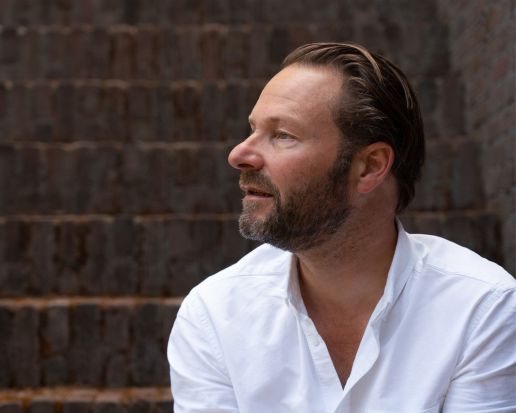
This edition of Munich Fabric Start’s Sustainable Innovations is a prime example to this approach – not only in respect to the responsibility held as a textile fair but also from the attitude and perspectives of the designer’s present. You see their visions in sound-created and laser print work. You feel their ideas in the provocative perspective that plastic is part of our natural landscape. And in the concept that ditching seams can lead to new manufacturing techniques and design approaches. But also, in revaluing materials like sisal and paper and the use of core natural elements like milk, starch and salt-crystals. I am positive that these projects will start a dialogue we can all learn from.
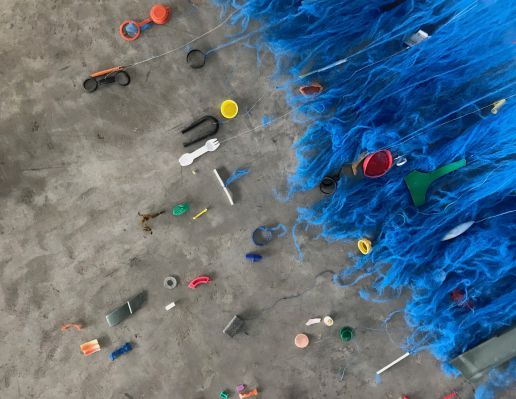
Again and again, the fear of the future, the consequences of environmental pollution and climate change emerge in the curated works. Challenge or opportunity, what do you think?
Your question shows that we are all still at very different stages in the process. Some people are aware and concerned about the transformations our environment is facing. Some are becoming aware of the changes and starting to value what still is. Others are reacting with action, ready to change the game. Specifically that we all have different point of views – with even more concerns to consider. So, there is not one dialogue, there are hundreds. There is not one solution, there is – as I refer to it – a chain of change happening on all levels. Therefore, I there is no “or” in between, instead it is an “and”: We have challenges AND opportunities. All of the designers offer opportunities through different approaches and create change, as challenging as it is.
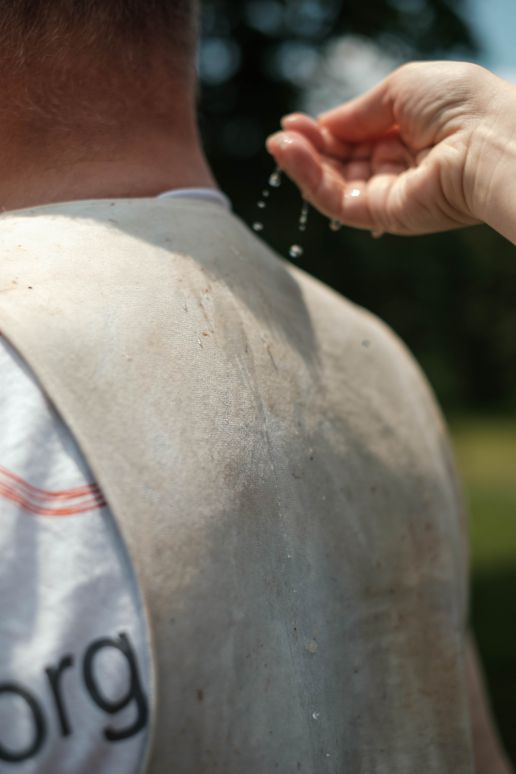
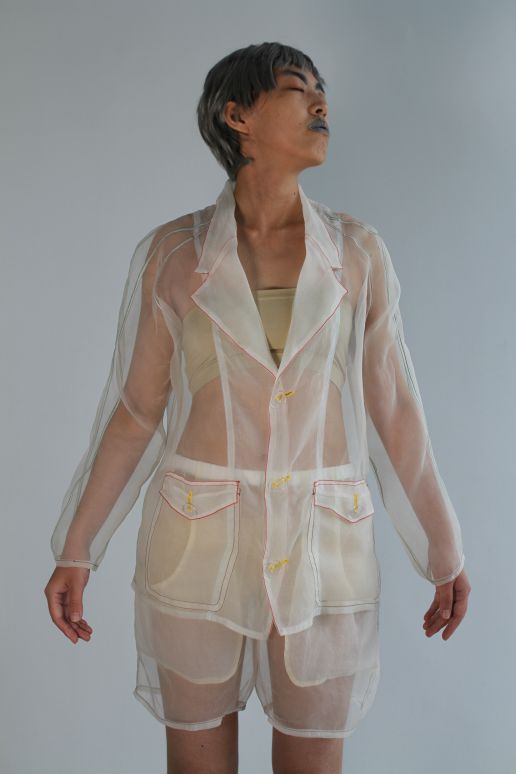
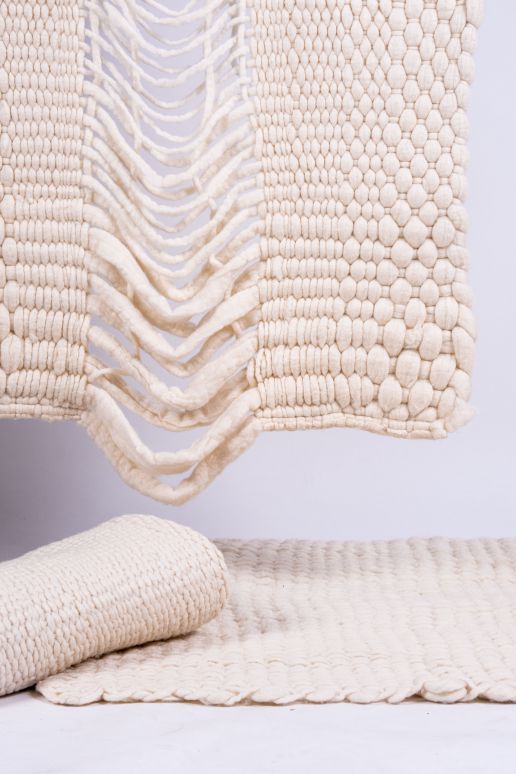
The use of potato starch, old printing methods and traditional Korean craftsmanship – one could almost say that “back to the roots” is the motto of the upcoming season. Posing the question, where does this development come from?
As designers are digging deeper, they often rediscover historic production processes and design principles, that make sense in the now as well. “We learn from history that we never learn from history”, a quote of a dear friend of mine. Now I learn that there are two meanings to this. The project of Caterina Tiolo is a good example for how changing the order of an old process can lead to totally new approaches – design and material wise. The development of redefining traditional processes and ingredients is really exciting. Or look at “Consumption of heritage” by Lee Sun: She uses traditional crafts and simple materials like paper in a modern fashion context and in that way values her heritage. So yes, if “back to the roots” to you means “revitalise tradition and values”, it is certainly a dominant development.
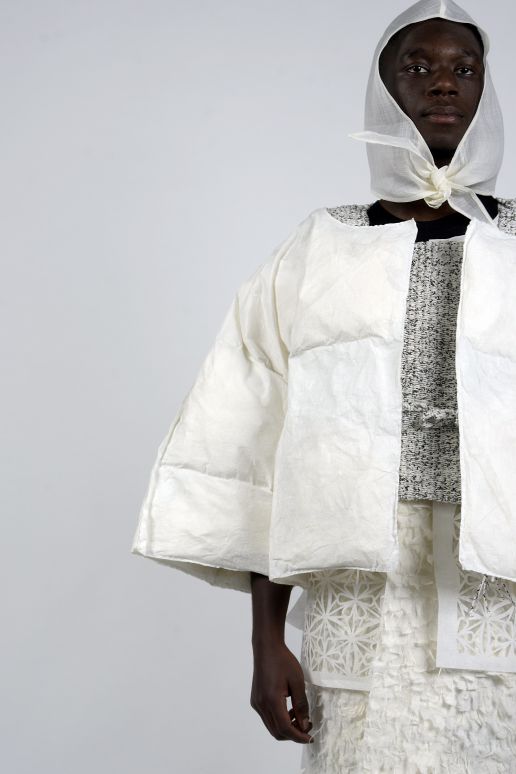
You are curating the Sustainable Innovations for the fifth time this season. What has changed?
From my perspective, it is not working on changes – we are working on this as a journey. I see many strong developments and tendencies and they are driven by dedicated professionals. Not only business and money-driven but instead also by values. I see that the industry is working on becoming a better version of itself. Feeling a glimpse of shared responsibility between designers, manufacturers, press and media, I am very optimistic. In the end it is all about the perfect couple: quality and consciousness.
2020 – a new decade begins. Looking to the future: how do you think the interplay of sustainability and textiles will develop?
As optimistic as I may sound – the more research I do in the field of textiles and fashion, it all comes down to our individual responsibilities: our behaviours as a human, existing as a consumer in this economic system. The causality of change has two central elements to start with: demand and supply. We have to stop putting ‘the good’ into a colonial and capitalistic context as from the early start of textile history to the fashion world of the now: The more we are aware and the more we share, together we can make this a great journey. Let’s take this chance and restore the enthusiasm to this economic world. Let’s thrive!
Visit Sustainable Innovations at KEYHOUSE on February 4-6 2020 in Munich.
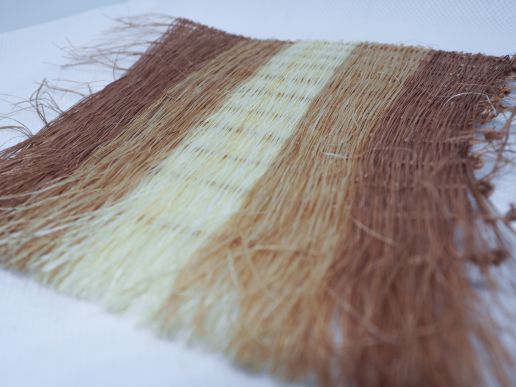
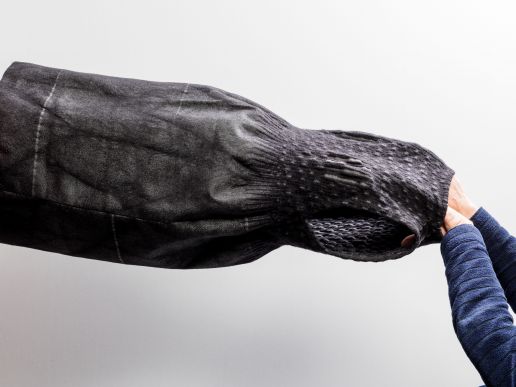
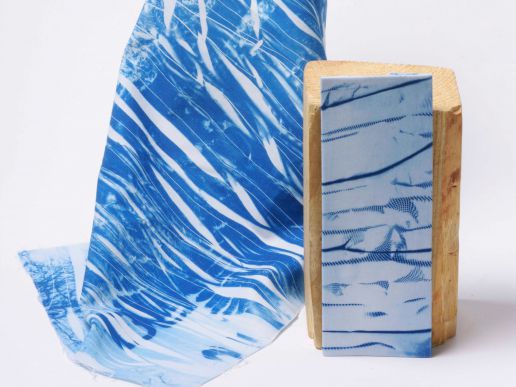
SUSTAINABLE INNOVATIONS: Interview with Simon Angel
You’re curating the Sustainable Innovations forum at Munich Fabric Start for the fourth time. Where are you looking for these new ideas and concepts?
I follow the heartbeat of current and future matters and perspectives. I am inspired by people and products which question the quality and essence of life. This leads me to the roots of the design processes, to the inner core of the industry, research institutes and universities. Textile innovations can be found in all different kinds of areas from fashion to health care, automotive as well as many other sectors. The art of thinking outside and inside the box at the same time plays a central role to find new innovations.
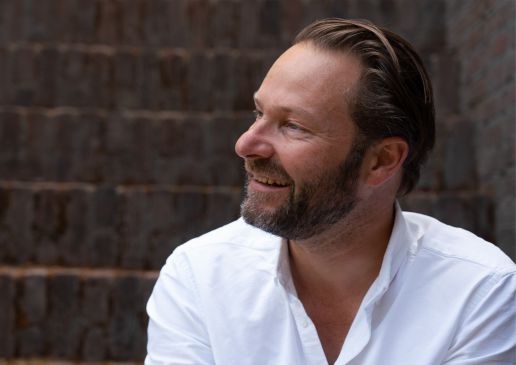
What do the showcased projects have in common?
There are two aspects which unite the Sustainable Innovations: poetry and purpose – and we most definitely need both! We need people who respond with poetry to inspire and open up new ideas and we need the hardcore problem solvers. With this edition we show several projects that provide concrete examples of what the successful interplay between poetry and problem solving can look like. Be it in 3D printing solutions or in human capital or in terms of circular solutions. Sustainable Innovations showcases great examples of what re-thinking and re-acting can lead to.
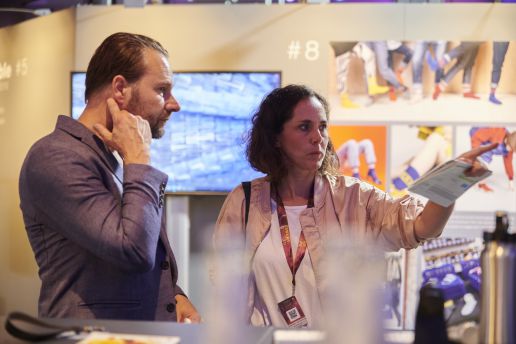
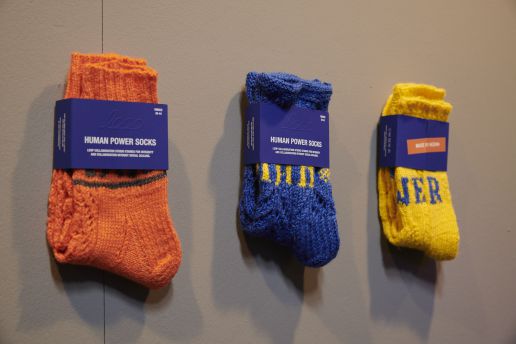
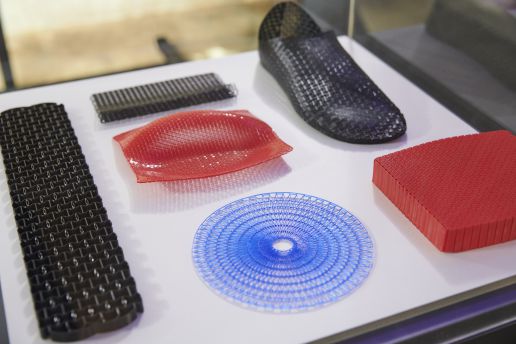
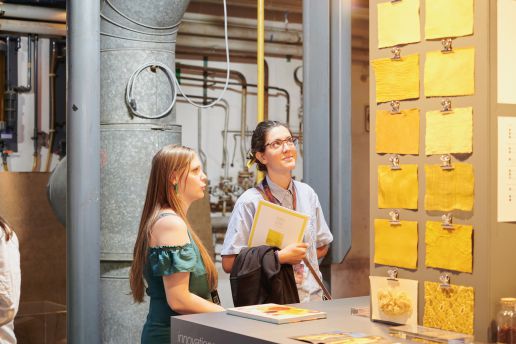
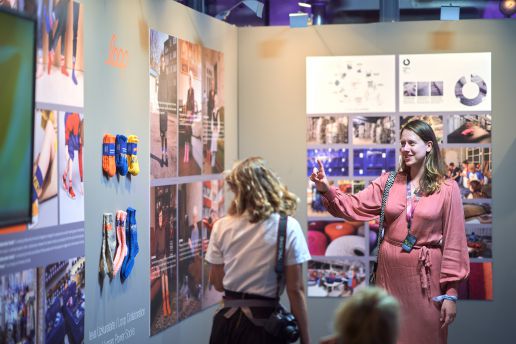
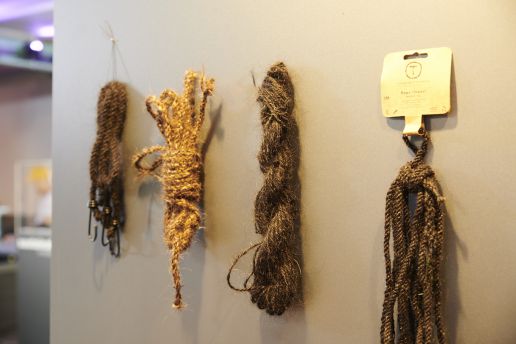
With regards to the exhibits, do you see any major trends?
I see the need for and can almost hear a desperate cry for contact. People want to develop a deeper relationship with each other but also with products and materials. The overload of information and the limitless possibilities to connect brings us to the essence of connection: purpose. The designers question their activities, relationships, products, services and business models in order to establish connections that make sense. Connections which will enable and explore new ideas, materials and directions. The power to create a new kind of connection is the next innovation: meaningful people, purposeful like poetry.

What can the industry learn from Sustainable Innovations?
Perhaps it’s not so much about learning something, but more about opening up and establishing a dialogue. The designer has their own view of the market as well as human needs and the industry has its own view and perspectives as well – but these two perspectives are not always sufficiently aligned. Therefore collaborations are key: BEyondAWARE!
